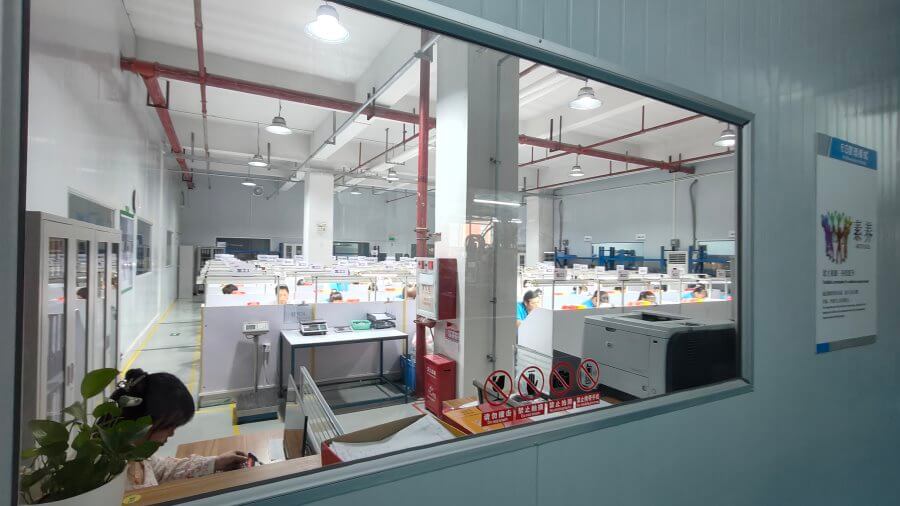Solid silicone rubber, also known as High-Temperature Vulcanized (HTV) silicone rubber, is a key category of organic silicone products. It refers to raw silicone rubber that undergoes high-temperature vulcanization (110–180°C) to transform into an elastomer. The base material primarily consists of high-molecular-weight polymethyl vinyl siloxane, blended with reinforcing agents and various additives. Hence, this raw silicone rubber is called high-temperature vulcanized silicone rubber.
High molecular weight (400,000 to 800,000) polymerized vinyl siloxane forms the raw material. Reinforcing agents, typically fumed silica, significantly enhance the strength of vulcanized rubber by several orders of magnitude. Cost reduction or performance enhancements are achieved by incorporating various additives, such as fillers, vulcanizing agents (organic peroxides or addition-reaction catalysts), structural control agents, and modifiers.
The rubber compound is placed in a mold and vulcanized under approximately 5 MPa of pressure and 110–180°C heat for 10–30 minutes. The resulting product is further subjected to secondary vulcanization in an oven at 200–250°C for 24 hours. This process forms solid silicone rubber (HTV), characterized by elasticity upon heating and pressure.
Solid silicone rubber (HTV) exhibits excellent properties, including high and low-temperature resistance, UV resistance, radiation resistance, weather resistance, electrical insulation, high permeability, physiological inertness, low permanent compression set, and fatigue resistance. Due to these properties, HTV is widely used in industries such as aerospace, instrumentation, electronics, marine, metallurgy, machinery, automotive, and healthcare. It is used to produce seals, gaskets, tubes, cables, human organs, blood vessels, breathable membranes, and more.
Raw Materials for Solid Silicone Rubber (HTV)
Silicone refers to polymers where silicon and oxygen atoms alternate in the main chain, with silicon atoms usually attached to two organic groups. Ordinary silicone primarily consists of siloxane units containing methyl and trace amounts of vinyl. Adding phenyl groups improves high and low-temperature performance, while trifluoropropyl and cyano groups enhance heat and oil resistance.
Silicone performs well at low temperatures, operating at -55°C and, with phenyl groups, down to -73°C. It also excels at high temperatures, functioning long-term at 180°C and tolerating short-term exposure to 300°C. Silicone’s excellent oxygen permeability makes it the most permeable synthetic polymer, and its physiological inertness and non-coagulative properties make it invaluable in medical applications.
HTV is available as raw or compounded silicone rubber. Common types include:
- Methyl Silicone Rubber (MQ): General-purpose.
- Methyl Vinyl Silicone Rubber (VMQ): The most widely used type.
- Methyl Phenyl Vinyl Silicone Rubber (PVMQ): Offers radiation resistance and low-temperature performance.
- Fluorosilicone Rubber: Adds specific performance enhancements.
To meet diverse application needs, raw silicone is processed into various types with specific properties:
- General-Purpose (Medium-Strength) HTV: Comprising vinyl and reinforcing agents. It has a tensile strength of 4.9–6.9 MPa, elongation of 200–300%, and is widely used.
- High-Strength HTV: Features modified vinyl or phenyl silicone and specialized additives, offering tensile strength of 7.8–9.81 MPa and elongation of 500–1,000%.
- Heat-Resistant HTV: Withstands temperatures up to 300–350°C through selected reinforcing agents and additives.
- Low-Temperature HTV: Maintains elasticity at -90°C with brittleness down to -120°C.
- Low-Compression Set HTV: Designed for minimal deformation under compression at 150°C.
- Electrical Cable HTV: Features excellent insulation properties.
- Oil-Resistant HTV: Suitable for industrial applications.
- Flame-Retardant HTV: Includes halogen or platinum-based flame retardants.
- Conductive HTV: Uses acetylene black or metal powder fillers for specific resistivity applications.
- Heat-Shrinkable HTV: Contains thermoplastic materials, enabling shrinkage of up to 35–50%.
- One-Step Cured HTV: Eliminates secondary vulcanization.
- Foamed Silicone Rubber: Produced with organic foaming agents for sponge-like structures.
Molding Methods for Solid Silicone Rubber (HTV)
HTV processing and molding techniques include primary vulcanization methods such as compression molding and extrusion molding, alongside rolling and coating techniques. Primary vulcanization involves cross-linking polymer chains, while secondary vulcanization stabilizes properties by removing decomposition residues and volatile compounds. Common equipment includes open mills, kneaders, and vacuum mixers.
Compression Molding
Compression molding, also known as thermal molding, involves placing a compounded silicone rubber mixed with a vulcanizing agent (such as DCP or DBPH) into a heated mold. The material is cured and shaped under high pressure using a flat vulcanizing machine.
This process is primarily used for solid silicone production, involving two mold pieces combined with a mold core placed between them, hence the name “compression silicone.” The production process consists of heating and pressing solid silicone raw materials in a closed mold cavity to form the final silicone products. Typically, the solid silicone material is uniformly mixed with additives using a mixing machine before being transferred to the mold for curing and shaping. After molding and vulcanization, the finished silicone product is demolded. This method is suitable for processing thermoset materials.
The hardness of solid silicone products after compression molding usually ranges from 30A to 70A (Shore hardness). During the silicone mixing process, raw silicone is placed on a two-roll mill or kneader, and additives like silica, silicone oil, and others are gradually incorporated to produce the final compound. The performance of silicone can vary based on the added fillers and additives.
This process is cost-effective, produces high output, and is widely used, particularly for monochrome silicone products. It can also be used for dual-color or dual-hardness products or multi-color and multi-hardness applications. Moreover, it is applicable for coating plastics or metals, but the objects must withstand temperatures up to 180°C without deformation.
The mold shape determines the shape of compression-molded silicone products. Currently, compression-molded silicone is the most widely used type in the silicone industry, used to produce industrial silicone components, buttons, silicone gifts, wristbands, watches, key covers, phone cases, silicone kitchenware, mats, ice trays, and cake molds.
Extrusion Molding Process This process resembles squeezing toothpaste from a tube. The extrusion die’s shape determines the cross-section of the product, which forms under force and temperature. The product is cured and shaped as it exits the die. This method is suitable for manufacturing strip-like silicone products with various cross-sections, such as rectangular strips and ring-shaped silicone tubes.
Extruded silicone products are produced by forcing silicone through an extruder, a continuous forming process suitable for either DCP-cured solid silicone or platinum-catalyzed liquid silicone. Under the interaction of the extruder’s barrel and rotating screw, silicone is continuously formed into semi-finished products of various shapes. This process is used for manufacturing silicone tubes, braided silicone hoses, and insulation sheaths for silicone wires and cables.
Silicone Vulcanization
Why is vulcanization necessary in silicone product production? Unvulcanized raw silicone is sensitive to temperature changes, becoming soft and sticky at high temperatures, prone to tearing and emitting an unpleasant odor. Except for some thermoplastic silicones that do not require vulcanization, most silicones require vulcanizing agents. Vulcanized silicone products resist softening under heat and brittleness under cold and exhibit excellent performance.
Principles of Silicone Vulcanization Dimethyl silicone molecules lack vinyl groups and typically use high-activity peroxides as vulcanizing agents. Peroxide radicals extract hydrogen atoms from methyl groups in the silicone to form macroradicals, which then combine to form cross-linking bonds. Introducing small amounts of vinyl groups into silicone significantly enhances vulcanization activity, improves cross-linking efficiency, and reduces peroxide consumption while improving product performance.
Adding more peroxide increases the cross-linking density, enhancing tensile strength, dynamic performance, and compression deformation resistance. However, tear resistance may decrease.
Stages of Vulcanization
- Induction Period: Cross-linking has not started, and the material maintains good fluidity. The length of this phase affects scorch safety and processing safety, influenced by accelerators and additives.
- Pre-Vulcanization: Cross-linking begins at a steady rate, achieving initial product properties but not optimal physical properties.
- Optimum Vulcanization: The silicone achieves balanced physical properties, reaching its optimal performance level.
- Over-Vulcanization: Excessive vulcanization can lead to network degradation or molecular chain breaks, causing product deterioration.
Secondary Vulcanization
After initial vulcanization at approximately 180°C, residual catalysts may remain in silicone products. For products requiring certification, secondary vulcanization (or post-curing) removes residual compounds to meet regulatory standards. This additional step enhances mechanical properties such as tensile strength, rebound, hardness, and heat stability.
Secondary vulcanization typically involves heating the product at a higher temperature to further cross-link and stabilize the material, ensuring superior performance compared to products subjected to only primary vulcanization. This step also removes potential contaminants to ensure safety and compliance.
Properties of Solid Silicone (High-Temperature Vulcanized Silicone Rubber, HTV)
1. High-Temperature Performance:
Silicone is renowned for its exceptional thermal stability. While its strength at room temperature is only about half that of natural rubber or some synthetic rubbers, it maintains flexibility, resilience, and surface hardness in high-temperature environments exceeding 200°C, with no significant changes in mechanical properties.
2. Low-Temperature Performance:
The glass transition temperature of silicone typically ranges from -70°C to -50°C, with specialized formulations reaching as low as -100°C. This demonstrates excellent low-temperature performance, making it highly valuable in the aerospace and aviation industries.
3. Weather Resistance:
The Si-O-Si bonds in silicone exhibit strong stability against oxygen, ozone, and ultraviolet radiation. Silicone inherently offers excellent weather resistance without the need for additional additives.
4. Electrical Properties:
Silicone boasts exceptional insulation properties, as well as resistance to corona discharge and electric arcs.
5. Physical and Mechanical Properties:
At room temperature, the physical and mechanical properties of silicone are inferior to those of general-purpose rubbers. However, at high temperatures of 200°C or low temperatures of -50°C, silicone outperforms general-purpose rubbers in physical and mechanical aspects.
6. Resistance to Oils and Chemical Agents:
Standard silicone exhibits moderate resistance to oils and solvents.
7. Gas Permeability:
At room temperature, silicone’s permeability to gases like air, nitrogen, oxygen, and carbon dioxide is 30-50 times higher than that of natural rubber.
8. Physiological Inertness:
Silicone is non-toxic, odorless, tasteless, and does not adhere to human tissues. It possesses anticoagulant properties and has minimal reactivity with body tissues, making it particularly suitable for food-grade and medical-grade applications.
Applications of Solid Silicone (High-Temperature Vulcanized Silicone Rubber, HTV)
1. Applications in the Electronics Industry:
Silicone is extensively used as an insulating material in electronics and electrical industries due to its excellent high- and low-temperature resistance, superior electrical properties, and stability across wide temperature ranges and electrical frequencies. Products include electrical connectors, seals, vibration-dampening components, and high-temperature potentiometer seals. Conductive silicone, made by incorporating conductive fillers such as carbon black or metal powders, serves as connectors in devices like computers, remote controls, and phones. Flame-retardant and radiation-resistant silicone wires and cables are widely used in nuclear power plants, while silicone heating sheets and bands are utilized for precise temperature control in various instruments and pipelines.
2. Applications in the Automotive Industry:
Silicone’s application in the automotive industry is rapidly growing. It withstands erosion from fuels and lubricants, enhancing component performance and reducing maintenance costs. Silicone is used in ignition wires, spark plug boots, hoses for heating and radiators, muffler liners, and seals near engines and transmissions that need to withstand temperatures of 175°C to over 300°C.
3. Applications in Food Processing:
Food-grade silicone is made from high-quality materials using advanced production techniques, offering transparency, odorlessness, and high-temperature resistance up to 230°C. It replaces traditional food-grade plastics, finding uses in silicone tubing, mats, sheets, and molds for chocolate, candy, and cakes.
4. Applications in Medical and Healthcare:
Silicone is widely used in the medical field due to its non-toxicity, biocompatibility, stable performance, and low coagulation tendency. Applications include blood transfusion tubes, catheters, drainage tubes, cosmetic materials, artificial skin, implanted materials, drug release systems, artificial organs, and more.
5. Applications in the Cable Industry:
Silicone is an ideal insulating material in the cable industry. It resists high temperatures, ozone, and weathering. Its thermal conductivity dissipates heat generated by electrical loads effectively. Applications include power cables, heating cables, ignition wires, and cables for nuclear and aerospace applications.
6. Applications in Aerospace and Aviation:
Aerospace materials require long-term operation between -75°C and 200°C, along with ozone resistance, radiation resistance, aging resistance, and flame retardancy. Silicone is indispensable in aerospace for sealing components, electrical connectors, switches, and protective covers, enhancing durability and safety while reducing maintenance costs.





